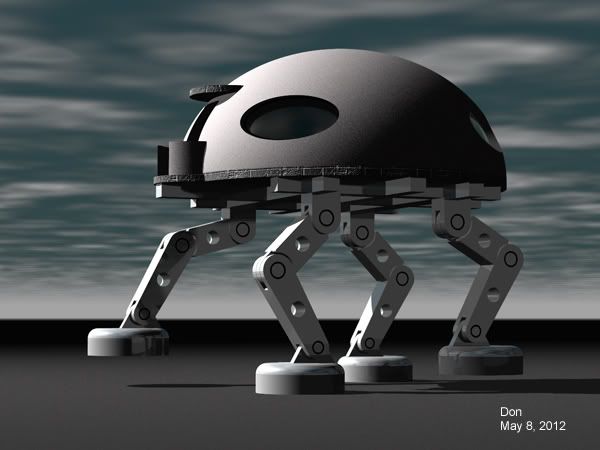Results 1 to 8 of 8
-
October 1st, 2009 11:23 AM #1
from gmanews.tv....
[SIZE=3]What to do if your house is hit by flood waters[/SIZE]
SOPHIA M. DEDACE, GMANews.TV
09/28/2009 | 12:58 PM

 | | More
| | More
The flood waters brought by tropical Storm "Ondoy" last Saturday reached epic proportions, displacing thousands of families across Metro Manila, Central Luzon, and the Calabarzon region and leaving about a hundred people dead.
With thousands still reeling from the devastation wreaked by the storm, GMANews.TV recommends the following safety and preventive measures against floods, as listed by the US Center for Disease Control and Prevention (CDC).
(The CDC is an "online source for credible information." View its full articles on flood emergency preparedness and response here and here.)
When you first re-enter your home
- Turn off your main power supply if there is still standing water in your home. Do this only if the switch is on a dry location. "If you must enter standing water to access the main power switch, then call an electrician to turn it off."
- CDC warns that you should never tinker with the power switch or use an electric tool or appliance while standing in water.
- Ask an electrician to check your house’s electrical system before switching on your power supply.
- "If the house has been closed for several days, enter briefly to open doors and windows to let the house air out for a while" for at least 30 minutes.
- CDC says that if your house has been flooded and closed for several days, it may be contaminated with mold or sewage.
When cleaning up your home
- Wear rubber boots, rubber gloves, and goggles when cleaning up your home. Make sure that children and pets are away from the affected area.
- Throw items that cannot be washed and disinfected, such as mattresses, carpets, rugs, sofa sets, cosmetics, stuffed toys, pilloys, books, wall coverings, paper products.
- "Remove and discard drywall and insulation that has been contaminated with sewage or flood waters."
- With hot water and detergent, clean hard surfaces like floors, walls, wood and metal furniture, countertops, appliances, sinks, and other plumbing fixtures.
- After the clean-up, wash your hands with soap and warm water that has been boiled for a minute then cooled down after. You may use disinfected water, too.
- With hot water and detergent, wash clothes you’ve worn during the clean-up or those contaminated by flood water or sewage water.
- Outside your home, have your onsite waste-water system professionally inspected and serviced if you suspect damage.
- "Seek immediate medical attention if you become injured or ill."
When drying out your house
- If an electrician says your power supply is safe to turn on, CDC advises you to use a “wet-dry" shop vacuum to remove standing flood water. You may also use an electric-powered water transfer pump or a sump pump.
- Make sure you wear rubber boots.
- If you do not have electricity yet – or if you have, but it is still unsafe to turn your power supply on – use a portable generator to power equipment to suck standing flood water.
- CDC adds: “If you must use a gasoline-powered pump, generator, pressure washer, or any other gasoline-powered tool to clean your home, never operate the gasoline engine inside a home, basement garage, carport, porch or other enclosed or partially enclosed structures, even if windows and doors are open. Such improper use can create dangerously high levels of carbon monoxide and can cause carbon monoxide poisoning.
- Open windows and doors of the house if the weather allows. You may use dehumidifiers and fans to remove excess moisture.
- Before turning on an air-conditioning unit or heating/ventilating system, have a maintenance or service professional check for possible mold contamination. "Professional cleaning will kill the mold and prevent later mold growth."
-
-
 Tsikot Member Rank 4
Tsikot Member Rank 4

- Join Date
- Oct 2002
- Posts
- 2,716
October 2nd, 2009 01:26 PM #3Let us start this thread discussing how to protect your car so that damage is minimal even if completely submerged in water.
Assuming you have enough time to do a few things, surely it is possible to minimize the damage. For example, the car is parked in the garage, the street is already flooded, you cannot move your car to higher ground.
I have a few ideas:
1. Remove the battery, store it safely as high as possible in the house.
2. Do something to prevent water from entering the intake manifold. Maybe remove the hose and tightly wrap a plastic or rubber sheet at the manifold. Plug vacuum lines.
3. Do the same at the exhaust pipe.
4. Remove the ECU, instrument panel, anything electronic you can detach from the vehicle.
5. You may also want to remove the seats too.
I think all these can be done in less than an hour if you already know how to do them beforehand.
Feel free to contribute.

-
October 2nd, 2009 01:31 PM #4
the problem is most people do not know how to do it specially on the electronics.
-
-
October 2nd, 2009 01:51 PM #6
Got this from my email.
The first time it happened we were in shock, but as it happened more and
more it became routine. Here are some nuggets of wisdom that may help:
1. I learned that once the water reaches knee level, the gates can't be
opened anymore because of the water pressure. We thought we still had time
to take the cars out but realized we were trapped. That time our cars
submerged. Make sure you know which area near your residence is considered
higher ground and take your cars there EARLY.
2. Do not despair so much if your cars submerge. They can be fixed. It's
expensive and takes a long time for the smell to go away, but it's not the
end of the world. After the flood, just let the car dry. We were still able
to use our Hi-Ace and Mitsubishi Lancer despite their having been half
submerged in floodwaters.
3. I learned that heavy stuff, like the ref and shelves, FLOAT. So every
year from then on, we would TIE DOWN heavy appliances like the ref (too
heavy to carry upstairs but in latter years we did lug it all the way up to
the 2nd floor), the big shelves with wedding souvenirs and knick knacks
and my dad's collection of wine. How did we do that? Tie them to the
windows.
4. Adrenalin will give you superpowers once you decide you're not afraid of
a little water and start saving what you can. In my case, it was my
collection of books. They're not rare first editions but regular books
However, I love my books and I'm not letting them drown! I was able to move
and carry our heavy sofa powered by my body's own adrenalin hormone.
5. You can have fun in the midst of disaster so I took out our cameras and
starting taking pictures. It was to make everyone have a good laugh as we
surveyed the chaos around us, the cockroaches and rats swimming by, the
black inky spots of oily stuff occasionally floating around.
6. Apparently, no matter how much you're enjoying yourself frolicking in
the water and saving what you can, once the cold water reaches your chest
(especially your nipples), you start to shiver and it gets hard to breathe.
This is the time to give up and go upstairs.
7. If your electricity stays on, go to the switch box and turn off all the
electric outlets downstairs but not upstairs.
8. Cleaning after the flood is a pain. Once the waters recede, you are left
with mud everywhere. They stick so you have to get the hose and start
using the walis tingting (how do you say this in English? It's a broom made
of just think twigs/sticks tied together in a thick bundle). You just
keep the water running and sweep, sweep, sweep like there's no tomorrow.
9. You must scrub the walls with disinfectant. If you only rinse with
water, it will still smell. We used Lysol. Scrub, scrub, scrub like there's
no
tomorrow.
10. First time water got inside our house, we didn't know we had to use
Lysol and that the drying process is super vital. So, after a few days,
there was this nauseating smell and later we found molds growing
everywhere! We had returned the furniture and appliances to their normal
places and
the walls behind grew molds. Yuck!!!
11. We were still able to use our ref that floated in flood waters. Just
clean and clean and dry and dry.
12. Once electricity is available, get out all your fans and dry everything
thoroughly.
13. Yes, paint will peel off and wooden drawers and shelves deform. Salvage
what can be used. Once they dry, it's still ok but sometimes the drawers
get stuck because the wood expanded so you have no choice but to destroy it
because icky water is still trapped inside.
14. Wait at least 2 to 3 days to dry everything. Use fans and hairdryers.
Do not, I repeat, do not be in a hurry to return stuff you saved to their
original places.
15. Have this mindset: Ah, it's good Im now forced to do a general cleaning
of my house. Now I have no choice but to do it.
-
October 4th, 2009 03:53 AM #7
Ooops. Wrong thread.
Last edited by Jun aka Pekto; October 4th, 2009 at 03:57 AM.
-
May 9th, 2012 01:00 AM #8
A house that can withstand typhoons and floods.
Features:
- aerodynamic shape to resist strong winds.
- mechanical legs enable it to rise above floods or move to higher ground.







 Reply With Quote
Reply With Quote




![Google Play TIPS & HINTS for handling a FLOOD disaster [MERGED]](https://play.google.com/intl/en_us/badges/images/generic/en_badge_web_generic.png)
One dude told me it was Li-Ion. Another dude corrected him. AFAIK the Zenix gets the Li-Ion hence...
MG4 EV Standard vs BYD Atto 3 Dynamic vs Toyota...